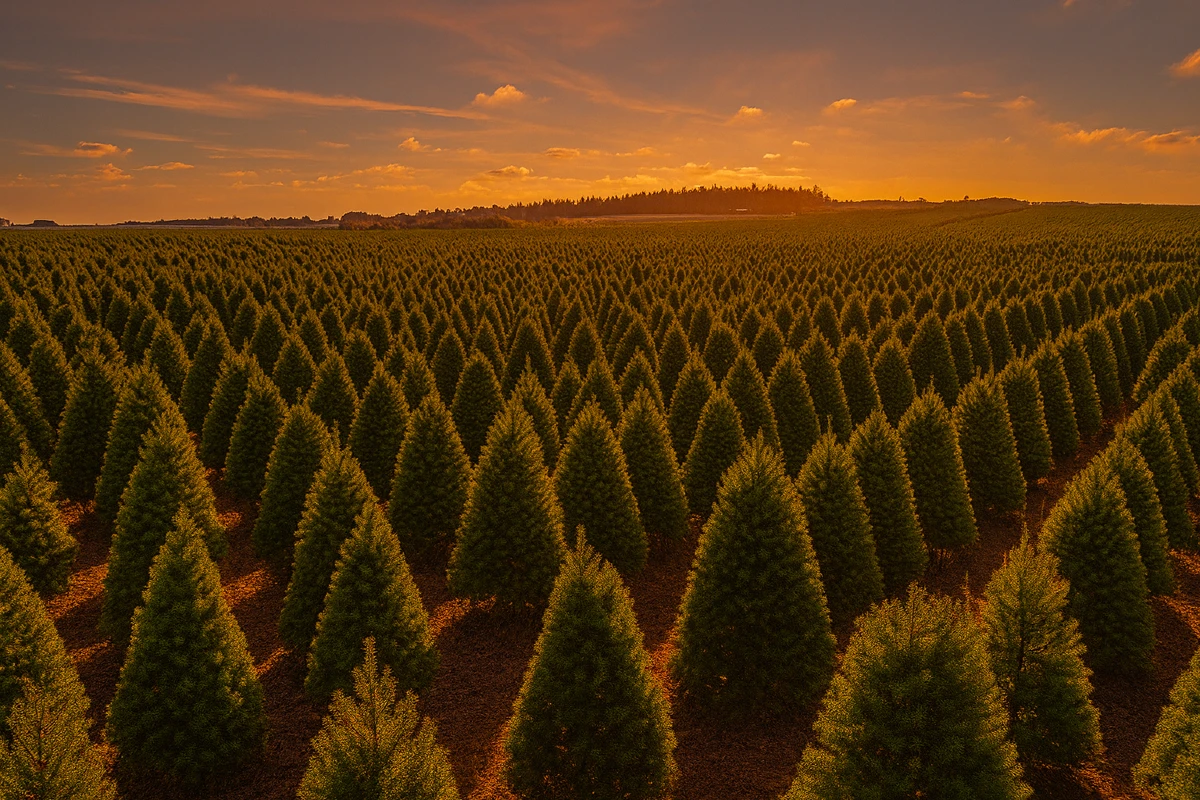Douglas Fir Christmas Tree Guide

Is the Douglas Fir a Good Christmas Tree?
If you’re looking for the best Christmas tree, check out our Best Christmas Tree guide. One of the most enduring choices across the U.S. and Canada is the Douglas Fir Christmas Tree — once the most widely sold Christmas tree species in North America. Known for its dense, soft needles and sweet holiday fragrance, the Douglas Fir has been a centerpiece of Christmas traditions for nearly a century.
Pros:
- Dense, bushy shape creates a full and classic Christmas look
- Soft, flexible needles are child- and pet-friendly
- Sweet, citrus-like fragrance fills the home with holiday cheer
- Widely available at farms and lots, often at a lower cost than Fraser or Noble firs
Cons:
- Branches are not very stiff — best for lighter ornaments
- Needle retention is fair but not as long-lasting as Fraser Fir
- Needs consistent watering to prevent drying indoors
Bottom line: The Douglas Fir is a time-tested, budget-friendly Christmas tree that shines for families who love a full, fragrant holiday centerpiece.
Description & Common Characteristics of the Douglas Fir
The Douglas Fir (Pseudotsuga menziesii) is not a true fir at all — but its charm has made it one of the most iconic Christmas trees in North America. Its short, soft, forest-green needles radiate evenly around the branches, giving the tree a dense, bushy appearance. The needles release a sweet fragrance when crushed, often described as citrusy or spicy, making it one of the most aromatic Christmas trees.
Historically, the Douglas Fir was the first tree species grown in large-scale Christmas tree farms in the Pacific Northwest during the 1920s. For decades, it dominated the market before Fraser Fir and Noble Fir began gaining popularity. Even today, it remains one of the most produced and sold trees in the United States.
What buyers notice most:
- Fullness: Dense branching makes the tree look lush and hearty.
- Soft needles: Gentle to the touch — no sharp points, safer for children and pets.
- Fragrance: Distinctive sweet, piney scent that many associate with Christmas.
Needle Retention & Fragrance
“How long will it last?” is the big question. Douglas Fir has moderate needle retention — better than spruce, but not as long as Fraser Fir. With proper care (fresh cut and consistent watering), it can last 3–4 weeks indoors. Its fragrance is one of its strongest selling points: sweet, citrus-like, and unmistakably festive.
Where Do Douglas Fir Christmas Trees Grow?
Douglas Fir is native to western North America. It grows in two main varieties:
- Coast Douglas Fir (var. menziesii): Thrives in the Pacific Northwest, from British Columbia down through Washington, Oregon, and into California.
- Rocky Mountain Douglas Fir (var. glauca): Found in interior regions like Alberta, British Columbia’s interior, Montana, Idaho, and Colorado. This variety adapts well to colder, drier climates.
For Christmas tree farming, Douglas Fir is grown extensively in:
- United States: Especially Oregon, Washington, and the Pacific Northwest — historically the top producer.
- Canada: Found on farms in British Columbia and beyond, wherever climates mimic its native range.
Because it grows faster and in more varied conditions than Fraser Fir, Douglas Fir has remained one of the most planted Christmas tree species across North America.
How Much Does a Douglas Fir Christmas Tree Cost?
Douglas Fir is often more affordable than premium trees like Fraser or Noble Fir. Commonly $10–20 per foot, or about $40–$180 depending on size and region
Prices vary by region, size, and whether you buy at a farm or urban lot:
- Small (4–5 ft): $40–$70
- Medium (6–7 ft, most popular): $60–$110
- Large (8–10 ft): $100–$180+
At urban tree lots, expect to pay on the higher end due to transport and handling costs. Choose-and-cut farms usually offer fresher trees and more competitive pricing — plus the family fun of cutting your own.
How to Care for a Douglas Fir Christmas Tree
Douglas Fir can last beautifully through the holiday season if cared for properly:
- Make a fresh cut: Saw off ½–1 inch from the trunk base before placing in water.
- Water daily: Douglas Firs drink a lot in the first week — never let the stand run dry.
- Use the right stand: Choose one with a deep reservoir to match the trunk size.
- Placement: Keep away from heat vents, fireplaces, or direct sun.
- Ornaments: Use lightweight decorations, as branches are flexible rather than rigid.
- Needle maintenance: Occasional vacuuming is normal — but if you see heavy needle loss, check water levels immediately.
With these steps, your Douglas Fir should stay fresh and fragrant for 3–4 weeks indoors.
Where to Find a Douglas Fir Christmas Tree Near You
Ready to bring home a Douglas Fir for your next Christmas? Whether you prefer a pre-cut tree at a city lot or a festive trip to a choose-and-cut farm, you’ll find plenty of options.
Explore local growers in our Christmas tree farms directory to discover Douglas Fir Christmas Trees near you. With just a few clicks, you can find farms by location, compare varieties, and plan the perfect holiday outing.